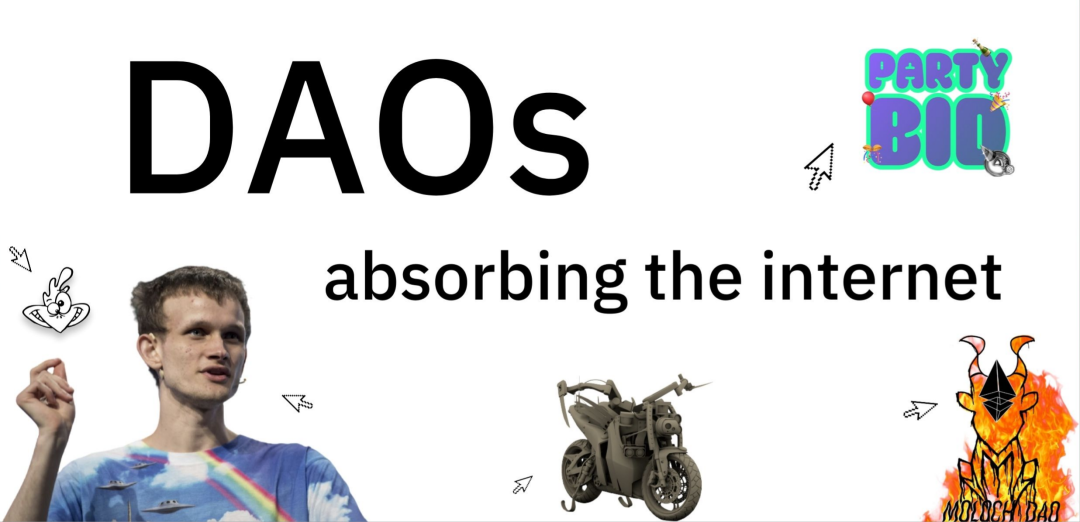
Content: Mario Gabriele
Compilation: Overseas Unicorn Team
Content: Mario Gabriele
Compilation: Overseas Unicorn Team
Typesetting: Jessie
DAO has become a core component of Web3.0.
People are not born to work for companies. Until 1820, only 20 percent of Americans lived from wages to wages, while the rest engaged in farming, fishing, and other businesses.The concept of "company" seems to be deeply rooted, but it is actually a product of modernization. It was born in the process of industrialization in the past 100 years. Due to the increasing demand for labor in society, workers are gradually concentrated in highly centralized organizations. Corporations are a new attempt by humans to solve cooperative problems.
Now, new changes are happening again. The emergence of DAO (Decentralized Autonomous Organization) attempts to make up for some of the company's shortcomings while achieving large-scale collaboration.This internet and crypto-native structure is designed to decentralize governance and ownership, giving every contributor the opportunity to participate in determining the direction of the project and truly profit from the success of the organization.
The most fascinating thing about DAO is that it enables individuals to truly have "ownership"- Originally in the corporate structure, it was owned only by the business owner. Business owners use a small amount of wages to buy out employees' ownership of the fruits of their labor. This kind of "exploitation" on a large scale has made the global gap between rich and poor widen.
Additionally, DAOs unleash individual creativity.Against the backdrop (and concerns) of artificial intelligence and robots replacing human beings, DAO creates a new economic form unique to humans by encouraging the active creation of individuals.
If the "company" changes the connection at the physical level, then with the development of DAO, it is very likely that it will penetrate into our current digital world and become an integral part of the new Web3.0 society.
The following is the table of contents of this article, and it is recommended to read it in combination with the main points.
We will launch two articles on the topic of DAO for in-depth discussions. The first part of the content launched today will introduce the history, definition, culture and industry ecology of DAO in detail.
02. What is DAO
feature
architecture
feature
architecture
03. Types of DAOs
04. Philosophy and culture
05. Industry ecology
01.
first level title
first level title
History of DAOsIn 2006, science fiction writer Daniel Suarez published a book called Daemon, which can be regarded as the original text on DAO.
In Daemon, the computer application Daemon secretly took over hundreds of companies based on the distributed nature and built a new world order. Although there are some bad behaviors in the operation of Daemon, we don't want any Web3.0 organization to get inspiration from it.
But the basics of how a Daemon works is very similar to today's DAOs: bounties are paid, information is shared across the community, and the currency is managed.
Although the functions are similar, Daemon did not directly create the name "DAO". The idea of DAO comes from V God, who wrote an article about "decentralized autonomous organizations" before the release of the Ethereum white paper. , and a concise definition of DAO:
"The DAO is a virtual entity that has some members or shareholders, 67% of whom, have the power to spend the entity's funds and modify its code."Like Suarez's Daemon, Ethereum DAO relies on the self-correction of the code, and the biggest difference or progress between the DAO envisioned by V God and Daemon is that DAO is transparent, with a clear governance process and a consensus-building path.This notion further explains the difference between the two types of DAOs:"Decentralized Autonomous Corporation"companycompanyandCommunityCommunity
companycompanyCommunityis a profit-seeking entity with tradable shares and dividends, whileCommunity"More like a democratic entity, community members vote on certain issues, such as adding or removing members."The company's mode of operation is
1 share = 1 vote, and the management model of the community is "1 member = 1 vote".April 2016
, the world's first DAO,
"The DAO" was born.The DAO has the best vision from the beginning: it hopes to become a venture fund in the Ethereum community, managed in a decentralized way, members crowdfund funds to The DAO, and vote on investment through tokens.
The idea is indeed alluring. The DAO quickly raised 12.7 million ETH, equivalent to 150 million US dollars at the time, and more than 11,000 people participated in The DAO's fundraising. These people can be regarded as The DAO's LP (Limited Partner, limited partner, the fund Investors), this amount of funds is considerable even compared with traditional investments,In contrast, in the same year that The DAO was established, the well-known fund Union Square Ventures announced the completion of a new round of fundraising of 166 million US dollars, which did not exceed The DAO by much.
If The DAO only manages the ETH raised at that time, does not invest, and only relies on the soaring ETH, its assets under management today are equivalent to 52 billion U.S. dollars; The DAO has the broadest source of projects) and the amount is even higher.
As a venture fund, The DAO is very likely to become Tiger Global in the field of decentralized finance.However, The DAO did not develop smoothly as expected, but soon experienced major twists and turns. In June of the same year, The DAO suffered a serious attack.More than 3.6 million ETHs were stolen and transferred from The DAO. Fortunately, The DAO's code rules stipulated a 28-day fund lock-up period. V God immediately rolled back through a hard fork to retrieve the stolen funds.
Therefore, Ethereum also forked an ETH (Ethereum) from the original ETC (Ethereum Classic), which is the Ethereum we commonly use today.
Even if there is no financial loss in the end, the hacker's attack on The DAO led to the split of the Ethereum community, which also illustrates the risks of the immature DAO structure.The development of DAO fell into an extremely long period of depression after this attack, but there are still some builders who continue to work: Aragon, co-founded by Jorge Izquierdo, has been developing tools for the DAO ecosystem since 2016, and MakerDAO was founded in 2015. The popularity of the industry continues to increase, and it continues to attract a large number of talents into the DAO field.
Before discussing the gameplay of DAO, we need to clarify the definition of "DAO".
02.
first level title
first level title
What is DAO""What is DAO?" Although we fully understand the development history of DAO, it is still difficult to answer this question well."First of all, the complete semantics corresponding to the abbreviation of DAO are:
Decentralized Autonomous Organization
, which means that DAO should contain several elements:
Not influenced by centralized authorities (decentralization)
Operates independently of government or the private sector (autonomous)
is an organization
But the reality is more complicated, and few of the entities known as "DAOs" today actually fit those definitions. Because true decentralization is rare, after all most projects initially require some level of centralization to get up and running. Self-government is the same.
The crux of the problem is that the characteristics of "decentralization" and "autonomy" should not be regarded as binary. This is not a question of "yes or no", but a question of degree. Decentralization and autonomy are two ends of the vertical axis, and "DAO" can be positioned between this range.
In addition to literal interpretation, different people have different understandings of DAO.
A gaming fan might sum up a DAO as "a group chat with a shared bank account," another might define it as a "community with distributed ownership." ".
These understandings are not right or wrong. DAO can be a group chat or a community. DAO is like an independent Odaily with different cultural atmospheres. But these rich and three-dimensional descriptions are still not enough to answer "what is DAO".
The DAO is more than just a Discord channel with a native token. DAOs are entities geared towards one common goal: to create value.
Therefore, in order to understand DAO more accurately, we should also sort out the difference between this form of organizational model and other types.
feature
To understand how DAOs are different from other organizations we need only look at how they handleownershipandand。
ownership
organize
ownershipRather than centralizing ownership in the hands of founders and investors, DAO distributes ownership to various stakeholders in the ecosystem, including contributors, users, strategic partners, suppliers, and more.
In essence, DAO belongs to everyone who creates value in it.
It's a pretty radical idea: DAOs create value by empowering a broader ecosystem than the traditional notion of one individual "owning" an organization.
organize
As mentioned earlier, DAOs seek "self-government".Originally, the term referred to a DAO’s desire to act independently at the organizational level—without interference from the state or private sector actors, and while this is what some DAOs are after, by their very nature, forms of autonomy occur more in the hands of individuals. level.
Members can join a DAO and choose to contribute in the way they think is best, the DAO may have its own guidelines,
But overall, each DAO stakeholder self-organizes only with its own workforce.
With this approach, DAOs can respond to many emergencies, resulting in a complex system in which no individual or group can coordinate top-down.
architecture
secondary title
architecture
To better understand how DAOs work strategically, they can be compared to existing organizational structures. Although fundamentally different, we can take a step closer to understanding DAOs by thinking of them as corporations, cooperatives, and networks.
DAOs as companies
Corporations are still a useful framework for understanding DAOs.
Larger DAOs often operate like companies, with well-defined "departments" such as product, marketing, engineering, and community. Each department usually has a team leader who directs and supports the work of other members, similar to a manager.
DAO leadership tends to be fluid and non-hierarchical, akin to a "teal organization". Management researcher Frederic Laloux defines Teal organizations as autonomous and spontaneous. They also encourage employees to give their full energy to the organization.
Note: The concept proposed by Frederic Laloux in his management book "Reinventing Organizations", Teal Organization refers to a self-management organization, which is the evolution of a Green organization with a pyramidal management structure. Zappos, Amazon's footwear e-commerce company, began to try Teal's organizational model reform in 2015.
The DAO as a cooperative
From an "ownership" perspective, a DAO is very different from a corporation, and a cooperative might be a more apt analogy.
A cooperative is owned and controlled by the workers who contribute to it, similar to a DAO. In a DAO, stakeholders receive tokens that grant governance and distribute ownership, much like workers in a co-op get paid at a grocery store. The difference is that DAOs are not limited by physical distance.
DAOs as networksDAO not only assigns ownership to the contributors of the organization (equivalent to employees in a certain dimension, members of the organization), but also other users (if the DAO is building products), strategic partners, suppliers, community members with the same mission A range of stakeholders, including DAOs, may be assigned ownership of the DAO.
This distribution model also differentiates DAOs from pure cooperatives,
DAOs become more of a network, with members interacting freely and their roles changing frequently and naturally.In many ways, the "network" is the most useful framework for understanding DAOs.
"Web" is not a new concept, but it is especially applicable in the Web 3.0 era. Networks are effective organizational forms when there is a wide range of coordination across both the public sector and the private sector.
Even today, there are probably a dozen or more ways to understand and recognize DAOs, and given the rapid innovation in this space, we may think of DAOs very differently in a few years. But in the long run, the basic goal of DAO shared value creation will most likely remain unchanged.
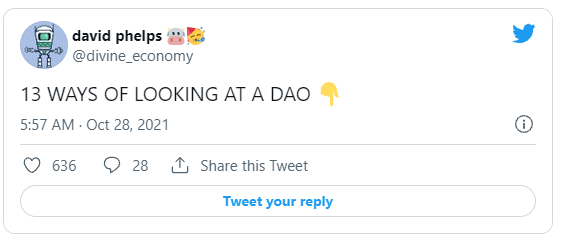
03.
first level title
first level title
Types of DAOsJust as the question "what types of LLCs exist?" is hard to answer, with the increasing diversity of DAOs, soon there may be so many DAOs that classification doesn't make much sense, but at least For now, we can still classify the types of DAOs.From a macro perspective, most DAOs are eithertechnology-oriented。
either
socially oriented
Technology-oriented DAOs tend to focus on building out of the crypto space, and also tend to perform more operations on-chain.
Socially oriented DAOs are more about bringing groups of people together and finding new ways for them to interact and gather. In this type of DAO, the "governance" process does not need to be on-chain, or does not require governance.
At present, there is no clear boundary between different types of DAOs. Just as "decentralization-autonomous" is a range, the types of DAOs are often between technology-oriented and social-oriented.
For example, MakerDAO is technology-oriented, but it has a high degree of community participation and interaction, and it can also be said to have a strong social component.
We will focus on: Protocol DAOs (Protocol DAOs), Social DAOs (Social DAOs), Investment DAOs (Investment DAOs), Grant DAOs (Grant DAOs), Service DAOs (Service DAOs), Media DAOs (Media DAOs), Creator DAOs (Creator DAOs) and Collector DAOs (Collector DAOs).
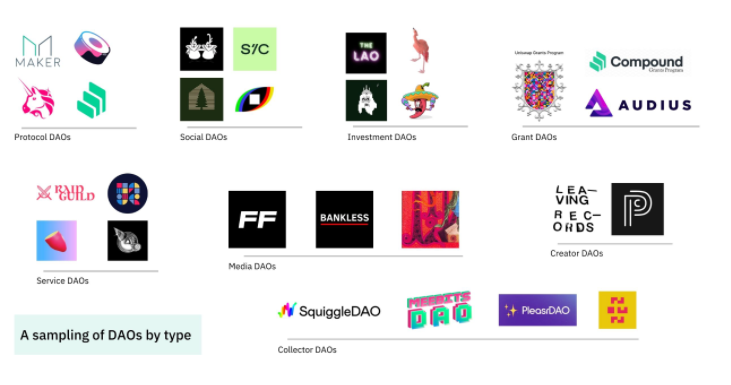
Protocol DAO
secondary title
Protocol DAO
Sushi, Uniswap, and Compound can also be considered protocol DAOs, although each operates according to its own structure.

Social DAOs
secondary titleSocial DAOs
The difference between these DAOs lies in the concepts of autonomy and ownership.

In addition, Seed Club, founded by writer Jess Sloss, and CabinDAO, Bright Moments, etc. are all social DAOs.
secondary title
InvestorDAO
LAO, founded by Aaron Wright, is a representative of this field. As the parent company, LAO has spun off and spun off a series of other investment DAOs, including Flamingo and Neptune. MetaCartel is another investment DAO worth watching.

Funding DAOs
secondary title
For example, Uniswap Grants run by Uniswap, Compound and Audius are all doing the same thing. Although functionally distinct from their parent DAOs, they are still connected by a sense of purpose and often a shared community.
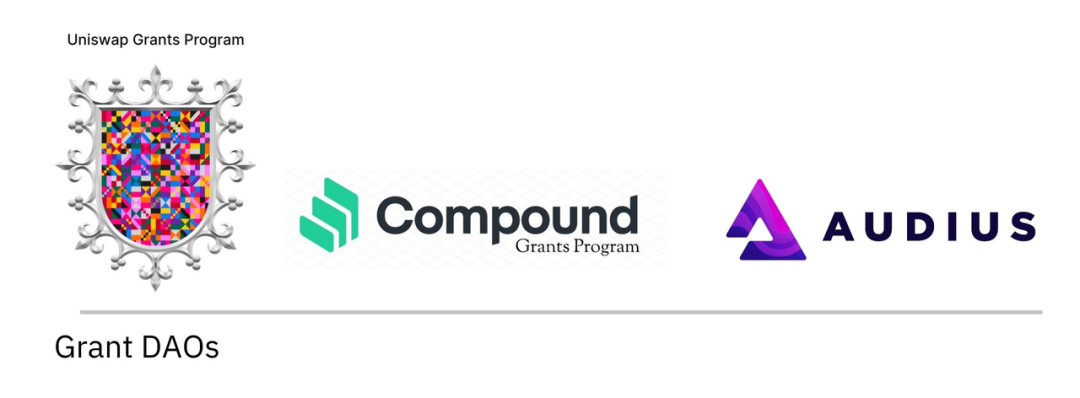
Service DAOs
secondary title
Service DAOs
PartyDAO, DAOhaus, Yam DAO, and many others fall into this category.

MediaDAO
Forefront, Bankless, and DarkStar are media DAOs that often collaborate to produce public content. Rewards from that content are shared across the team, and governance is also a public affair. Stakeholders can help decide which topics to cover as well as manage resources.
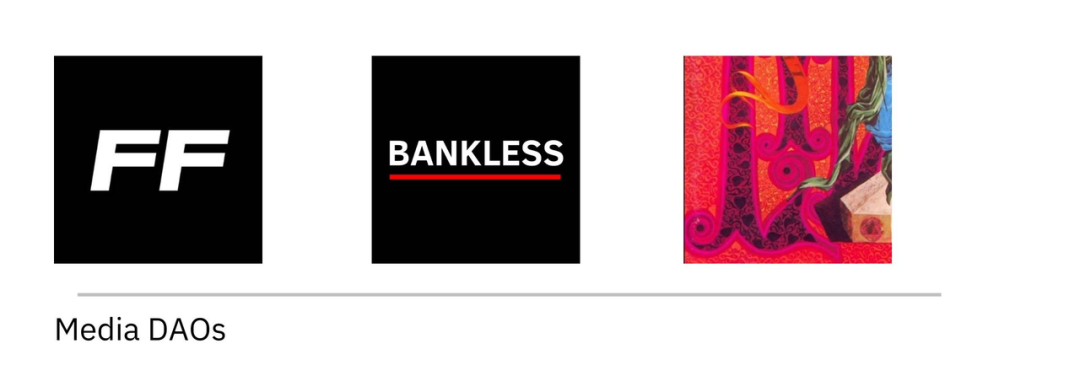
Creator DAO
secondary title
If "media DAO" is a publication-oriented concept, then "creator DAO" is more centered on "individual creators", just like some fan clubs provide consumption and interaction opportunities for the most influential supporters, Creator DAOs also have the ability to do this. In addition to the "fan-creator" interaction, if an organization also exists to support the creators you care about most, then you can also actively contribute to this organization.

There are not many Creator DAOs at present, but we have seen many creators use social tokens on Roll and other products to meet this part of their needs, which laid the foundation for the development of real Creator DAOs. Next, Creator DAOs There will be more and more, and the pioneers in this field include Leaving Records and Personal Corner.
secondary title
Collector DAO
Although similar to investor DAOs in terms of "revenue-driven", collector DAOs are positioned slightly differently. They organize contributors together through a specific asset or collection, and decide to collectively buy art or other digital assets. composed of people. NFT is a more common choice.
While the accumulation of NFTs itself has the potential to generate extremely lucrative financial returns compared to investments, these DAOs are generally not interested in selling what they already have, at least in the short to medium term. Compared with other types of collections, DAO's participation in NFT not only earns investment income, but also a love for art.
In addition to collections, collector DAOs sometimes act as planners for certain NFT projects, and their addition often brings institutional endorsement and support to the projects.

Typical collector DAOs include SquiggleDAO, PleasrDAO, and NounsDAO. Although they are all collector DAOs, their functions and organization methods are different.
Looking ahead, it's worth reiterating that while the above categories are instructive, we're just getting started. Many future great DAOs will have more unimaginable room for innovation and development.
04.
first level title
Philosophy and Culture
textDAO represents a new paradigm of large-scale human coordination, and the core of human coordination is actually organizational culture, which has nothing to do with whether it is "decentralized".Like the corporate culture of early startups or some underground pop culture,
In the seminal article "Squad Wealth" by the research organization Other Internet, they note that culture can consist of anything from "memes, trending topics, inner language, aesthetics, to crafts that are tailored only to a specific group."
While each DAO finds its own way to produce a culture with visual, verbal, and behavioral norms, two traits seem to be particularly prevalent across DAO environments: the propensity of participants to behave like owners, and the desire to fully expectations of transparency.
secondary title
behave like the owner
When talking about the culture of a DAO, "ownership" must be the first thing that comes up.
Not only does it incentivize individual participation, but it fundamentally changes how contributors perceive their efforts and labor. All work is built on the pursuit of a larger purpose, and the positive rewards of this purpose are jointly owned by the participants. Ownership creates an atmosphere of creativity, success and a certain uniqueness within the organization. As owners of organizations, people are more financially and psychologically inclined to support their peers, elevate the work of others, lower their egos, and work as hard as they can, than traditional “workers.”
"As the role of individuals in value creation becomes more pervasive, software will evolve toward being not only built, operated, and funded by individual users, but also owned by them."
In a sense, DAOs are exactly this kind of "software", they not only elevate individuals, but also give users the opportunity to participate in creating and owning, very powerful.
first level title
completely transparent
Transparency plays a vital role in any organizational culture because it builds trust among all involved. The DAO achieves this at an unprecedented level due to the public and immutable ETH address of any DAO on the blockchain. This creates a check and balance that allows stakeholders to stay informed about how the DAO is using their capital while ensuring that the leadership team is indeed making decisions based on the community.
Through new forms of decentralized ownership and transparency, DAOs have the potential to create new organizational structures where users are no longer passive participants on the platform, but active, properly incentivized owners of the network - centered around trust and coordination . This distribution of power and culture leads to more agility, resilience, and antifragility, which helps create a world where large numbers of people on the Internet can compete with even the most powerful centralized corporations contend.
05.
first level title
first level titleDAO has become a core component of the entire Web3.0 world.
At the same time, an emerging ecosystem has emerged to support the core functions of these organizations. Next, we will focus on introducing some DAO industry ecology.
secondary title
Establish

Aragon
To create a DAO, there must first be a DAO. A simpler way to understand is that there are also Stripe Atlas-like products in the encryption field, which can help a DAO start quickly, including membership management, financial tools, and governance infrastructure.
Syndicate
There are currently Aragon, Syndicate, Orca, Tribute, and Colony in this space, and they are not in direct competition with each other, each solution has a unique value proposition and feature set. In the next few years, more products will definitely enter this field.
Founded in 2016, Aragon provides a suite of applications to create, manage and govern DAOs at scale. Includes Aragon Court, Aragon Govern, Aragon Voice, and Aragon Client. As one of the first teams working on DAO infrastructure, the Aragon Association has become an important service provider for DAOs and claims users from well-known projects like LidoDAO.
Syndicate is a decentralized investment protocol and social network focused on investing in DAOs. Its mission is to democratize the investing world by allowing individuals and communities to launch investment vehicles faster and cheaper than traditional funds. Syndicate's solutions include legal support and social networking protocols that allow the investment community to convene, communicate and deploy capital.
Orca protocol
DAOs often find it difficult to maintain high participation rates at scale. The Orca protocol has a clever solution to this, while also reducing funding and resource deployment bottlenecks.This is a big breakthrough, bringing composability to DAO by creating infrastructure, allowing DAO to be "Legoized"
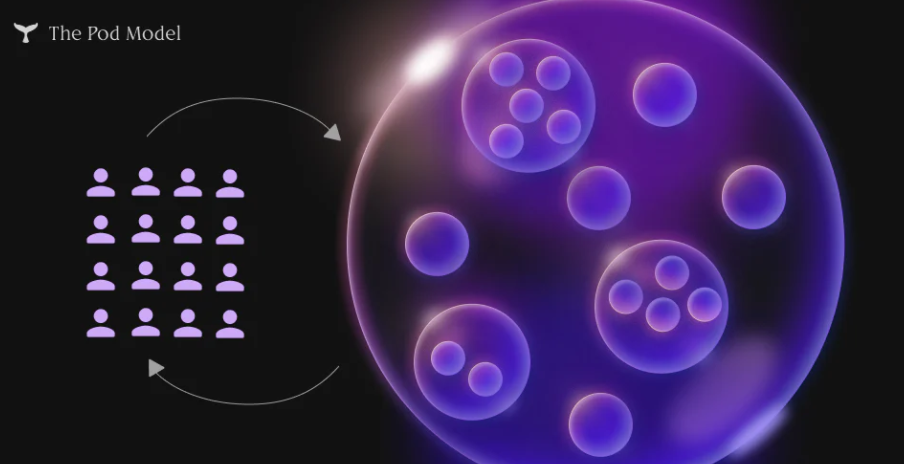
, in addition, because the "pod" breaks up the DAO, the team composition can be miniaturized, so coordination and participation are easier.
Tribute
image description
Colony
Inspired by ant colonies, Colony provides a series of Ethereum smart contracts to start a DAO without any coding. Colony simplifies governance, permissions, compensation, and more. Colony itself is maintained by Metacolony, a yet-to-be-public DAO that continually develops and maintains tools for those utilizing the Colony infrastructure.
communicate
secondary title
Once a DAO is established, it needs to facilitate communication among its members. Of course, healthy discussion is key to information sharing, but also to enabling voting mechanisms, money management, and broader coordination. No one wants a DAO to be silent.

Discord
It can be said,As a result, many tools have appeared to meet the communication needs, including Discord, Telegram and Twitter.It can be said,
The main communication and coordination of DAO is done through Discord
, for those who haven't yet entered the dizzying world of Web 3.0, Discord is: a free voice, video, and text chat platform that's rapidly gaining popularity in the ecosystem.
These qualities of Discord make it a natural attraction for DAOs.On the one hand, starting Discord is relatively simple, and thanks to its channel and subchannel architecture, organizing communication is easy and flexible.
What's more, since Discord has become the default in Web 3.0, many useful bots and plugins have emerged to support it.
Chief among these is the “Token Permissions” feature. As mentioned earlier, some DAOs are only accessible to those who hold a certain amount of native tokens. For example, if we were to launch RandomDAO, we might insist that anyone who wanted to join Discord needed to hold 420 $RANDOM tokens.
Telegram
Tools like Collab.Land make it easy for DAOs to ensure that only those who meet the token requirements can access private chats. Other widely used bots include MEE6 and Statbot.
Also, it's worth noting that Discord integrates well with existing sites; this is expected to be an increasingly important feature as more and more communities transition to DAOs.
The most common alternative to Discord is Telegram. Despite its popularity among the crypto crowd, Telegram does not yet have the reach and scale of Discord in the DAO space. This is largely because Telegram doesn't offer the same level of fine-grained moderation, especially when it comes to bot auto-responders and subchannels.But on the other hand, perhaps because Telegram is simple enough, many DAOs started on Telegram and migrated to Discord as they grew and became more complex."How is Twitter still free?" This is a meme among users on the Twitter platform.
On certain dates, the information and insights on the Twitter platform are staggering, and its social supremacy has once again been cemented.
While Twitter did not meet the DAO's need for private, high-volume chat, we must admit that it is still an important communication tool in the ecosystem, especially for discovering new projects.
secondary title
Coordinating organization

Coordinape
One of the greatest challenges facing any collective, whether it is a local community or a multinational corporation, is coordinating management. Historically, people have used "hierarchies" to manage this problem, but what's the best solution in a flat, decentralized structure?
DAO community management and coordination relies on many different tools, currently mainly including Coordinape, Collab.Land, SourceCred and DAOhaus.
By using DeFi blue chip protocols such as Yearn and Sushi, Coordinape helps DAO coordinate and allocate resources to contributors.
Collab.Land
For example, Coordinape's "Circle" product allows DAO contributors to "give away" a limited number of GIVE tokens to people they believe are bringing value to the organization. While this has the benefit of making the process fun enough to reward participation, it also creates a reward system on a de facto level that directly reflects who exactly is driving the project forward. In addition, because anyone has the right and ability to choose to reward anyone else, the rewards implemented by Circle are also functionally decentralized.
But there are also people who disagree with this mechanism. Those who disagree believe that the Peer to Peer reward method will trigger a "popularity contest", and those members who are extroverted enough and good at expressing themselves will naturally get excess rewards. distribute.
SourceCred
This tool provides a token authority supervision bot for Discord and Telegram. Collab.Land is useful on both DIscord and Telegram when a DAO needs to assign roles to its members. Due to its relative ease of use, Collab.Land has become a commonly used tool in the industry, and as the number of DAOs grows, its usage should rise.
Guild, while not fully launched, is an alternative with a similar feature set.
DAOhaus
Although both are released by SourceCred, Cred and Grain are different: Cred answers the question "Who provides value?", Grain corresponds to the question "How should we reward people for providing value?"
DAOhasu is a "no-code platform" up and running based on the framework built by MolochDAO, DAOhas allows users to coordinate through a central hub where they can check activity, governance proposals and financial status, manage membership. Since the platform is based on the MolochDAO structure, DAOhaus users also have access to all other tools MolochDAO has to offer.
secondary title
Remuneration
Let's change the angle and talk about how DAO can pay its contributors.
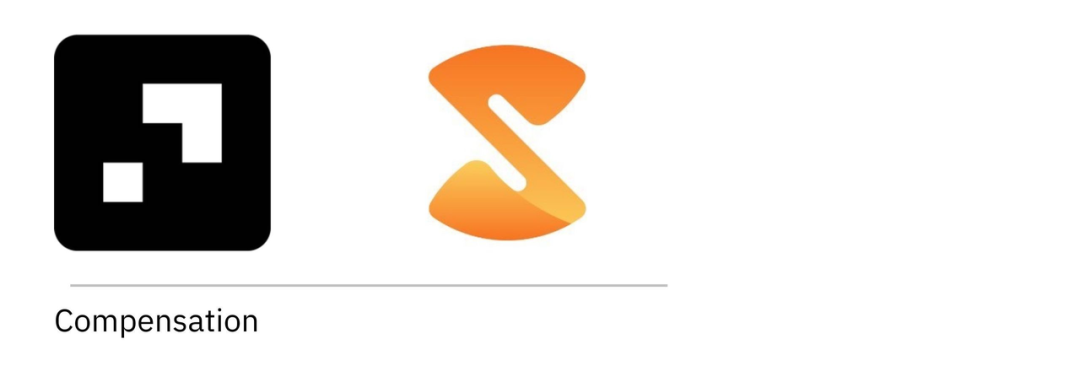
Superfluid
In some DAOs, the payment function is set as a part of the larger DAO structure, but there are also some DAOs that are specifically positioned to provide payment services. Superfluid and Sablier are two DAOs worth watching in this space.
Sablier
First of all, these tools can be abstractly understood as "DAO's payroll", because they help DAO to process payments regularly on the blockchain with the least gas fees, that is, through Superfluid and Sablier, DAO can more easily and cost-effectively Pay contributors.
A distinctive feature of the Sablier is that it is truly autonomous. The team that created the project destroyed the administrative keys that control the Layer 1 contracts. This means that the creators of Sablier cannot prevent real-time data recording and updating. It is, in the words of founder Paul Razvan Berg, “a 100% decentralized public good.”
governance
secondary title
governance
Solving governance and coordinated decision-making at scale is one of the most difficult problems facing DAOs.
Why is it so difficult?
One of the highlights of Web 3.0 is censorship resistance and "permission-free accessibility". In other words, anyone, anywhere can transact with each other or participate in decentralized protocols and applications without third-party interference.
As DAOs grow and scale, this "permissionless access" can be a double-edged sword. Without a hard cap on the number of members, DAOs typically grow larger and more diverse over time. Ultimately, a popular DAO may have tens of thousands of members, each with their own set of skills, experiences, values, perspectives, and backgrounds.
To be clear, this is a good thing.
Snapshot
Web 3.0's ability to transform individuals from workers to owners is one of its most fundamental and compelling attributes. But as communities become more decentralized, so does the need for robust governance, otherwise, you can end up with a fragmented organization where every participant is just babbling.
In response to the above problems, several teams have tried to develop and build tools that help organize and motivate members. Snapshot and Discourse are two of the more widely used products.Snapshot is an off-chain voting platform that does not charge gas fees, mainly for DAOs that issue ERC-20 and ERC-721 governance tokens.Expensive gas fees on Ethereum make it extremely costly for all but the largest token holders to participate in on-chain governance.Sushi community
Proposals that were voted on most recently.
image description
Sushi's Snapshot page
Discourse
In addition, the product "SafeSnap" developed by Gnosis (discussed below) can realize off-chain voting to be executed on-chain by combining Snapshot and Gnosis Safe functions. What does this mean? SafeSnap enables Gnosis DAO participants to vote off-chain in order to save gas costs, after which the voting results can be seamlessly executed on the chain, thereby avoiding the gap between the "voting-execution" process caused by cross-chain possibility of being disturbed.
Aave's Discourse page
treasury
secondary titletreasury
Many community DAOs require members to invest an upfront capital to participate. The funds are then funneled into the DAO's "vault".Like traditional companies, DAOs also want to manage assets efficiently and hope that assets will appreciate in value. Therefore, the funds in the "vault" are used to invest in the assets of the entire digital ecosystem, including NFTs, social tokens, encrypted projects, etc. In fact, these DAOs also act as decentralized investment funds.
Considering the possible differences in the scale of investment, some people may think that it is inaccurate to compare the investment practice of DAO with the fund.
But today, various DAOs have collectively managed tens of billions of dollars, and these funds are large enough to make DAOs be regarded as very important investment entities with complex needs.
Llama
Most DAOs are ambitious, but managing these funds and investments smartly can be difficult. First of all, the encryption industry is very unstable, and the assets of a certain DAO may fluctuate by 20% on a certain day. To avoid these fluctuations, DAOs must be diversified.
Parcel
Llama, Parcel and Gnosis aim to give asset managers the tools they need to deal with such volatility.
Gnosis
Llama is a DAO that assists other DAOs with money management. It has created reports, treasury management guides, and sales and financial statements for DAOs such as Aave, PoolTogether, Uniswap, Gitcoin, and FWB.
Parcel is a financial tool already used by some of the larger DAOs in DeFi, and it includes a series of components such as Aave Grants, Compound Grants, and Synthetix. Currently in the closed testing stage, Parcel is currently providing services for 8 DAOs, and has assisted a series of batch payment needs of various projects, and the amount of funds processed has reached 3 million US dollars. As DAOs scale, they will also need solutions from Parcel to manage the flow of funds to efficiently award recipients, pay contributors, and deploy funds.
Gnosis Safe is a service developed by GnosisDAO to provide a better user experience for the DAO's "multi-signature wallet".
It’s a wallet that requires multiple signatures to approve transactions, and DAOs typically use this framework for fund management, abuse prevention, and decentralization.
Unlike some alternative solutions, Gnosis Safe supports ERC-20s and ERC-721s assets, allowing DAOs to keep NFTs in multi-signature wallets. Strong funding tools are becoming more and more important here, as the prices of many NFTs have surged.
secondary title
other well-known organizations
PartyDAO
DAOs have the opportunity to bring the next 100 million or more people into Web 3.0. As the infrastructure for organizational development and deployment, DAOs will also demonstrate a new way of coordinating individual and institutional engagement, helping us rethink how we work together and make decisions as a collective.When the above-mentioned tools and strategies are combined, a series of rapid development DAOs are born.
PartyDAO is a decentralized collection of developers, writers, engineers, and designers involved in designing and building DAO tools.
Mirror
Their first product, “PartyBid,” allows users to crowdfund funds to participate in auctions for NFT items.
PartyBid has helped users participate in NFT auctions for Cryptopunks, Andrew Yang, CrypToadz, and more through crowdfunding. With the release of "Party Splits" at the end of September, PartyDAO has now achieved the fragmentation and distribution of NFT ownership.Founded by Denis Navaroz, former partner of a16z crypto, Mirror is a distributed creation platform. By using WRITE tokens, users can pay WRITE to create their own works. In addition to publishing articles, they can also participate in content creation through their voting rights.
Seed Club
Soon, Mirror became the place many people chose to publish their Web3.0 ideas and start a community.
FWB
A single article on Mirror may form a DAO. For example, "Crypto, Culture, & Society" (encryption, culture and society) initiated by Mirror's CTO developed a crypto learning DAO using the Mirror platform. 25 ETH were also raised.
Seed Club is a community DAO that initiates and supports token investment. Seed Club has attracted many top opinion leaders and founders in the field of social tokens. It has also begun to cooperate with other well-known DAOs or community organizations, including PartyDAO, Forefront, The Generalist, and SquiggleDAO, etc.We have already talked about FWB (Friends With Benefit) before, and not long ago, this large social DAO announced that it had raised $10 million in funding from a16z, Pace, and some other companies.
FWB is one of the largest gathering places of encryption thinkers,Broad topical discussions are taking place here: on FWB's Discord, one channel might be talking about music, another might be talking about NFTs, and a third might be talking about investing.
The LAO
Besides being a social club for the Web3.0 era, FWB members actively build products for the community.
In short, it is becoming a real stronghold of the cryptosphere.
Although it retains many of the characteristics of DAO, The LAO is not strictly a DAO. The full name of the organization founded by Aaron Wright is "Limited Liability Autonomous Organization (Limited Liability Autonomous Organization)". The entity of the LAO is located in Delaware, USA.
MetaCartel
In addition to the differentiated structure, LAO's influence in the investment DAO field is also very significant. Not only has it received more than $65 million in donations, it has spawned a wave of sub-organizations. Including Flamingo (an NFT collective), Red DAO (a digital fashion DAO), Neon (a Metaverse DAO), Neptune (a DeFi liquidity DAO) and more. As noted by the aforementioned diversity of DAOs, limited liability structures can help across the spectrum of crypto-related projects.
Moloch
Given that these entities have been very active in the crypto space for the past few years, the returns are almost certainly insane. Wright himself said on Twitter that Flamingo is on track to hit $1 billion in assets under management:
MetaCartel is a decentralized group of builders who initially focused on supporting Dapp development, but have since pivoted to grant-based DAOs. MetaCartel educates people about DAOs, conducts case studies on real-world DAOs, and is involved in all things assisting with the development and bootstrapping of new DAOs. MetaCartel also formed an investment arm called MetaCartel Ventures and has invested in several other DAOs.
Rabbithole
Moloch DAO was originally established to fund Ethereum public infrastructure related to ETH 2.0. Now Moloch has expanded into Grants DAO, supporting projects such as Tornado Cash, Lodestar, and Dapp Nodes through grants. A number of subprogrammes have been created to evaluate projects applying for funding.
Additionally, MolochDAO provides an open-source DAO framework with v2 smart contracts. We noted earlier that both Tribute and DAOhaus have benefited from Moloch's work.
Rabbithole is a learn-to-earn DAO that offers consumers a way to learn about crypto while earning rewards.
Through "tasks," Rabbithole helps the protocol acquire trained community members who demonstrate their abilities in the process. Aave, Opensea, Matcha, Perpetual Protocol, and PoolTogether have partnered with Rabbithole.
Reference
https://www.readthegeneralist.com/briefing/dao
This article is from Overseas Unicorn, reproduced with authorization.





